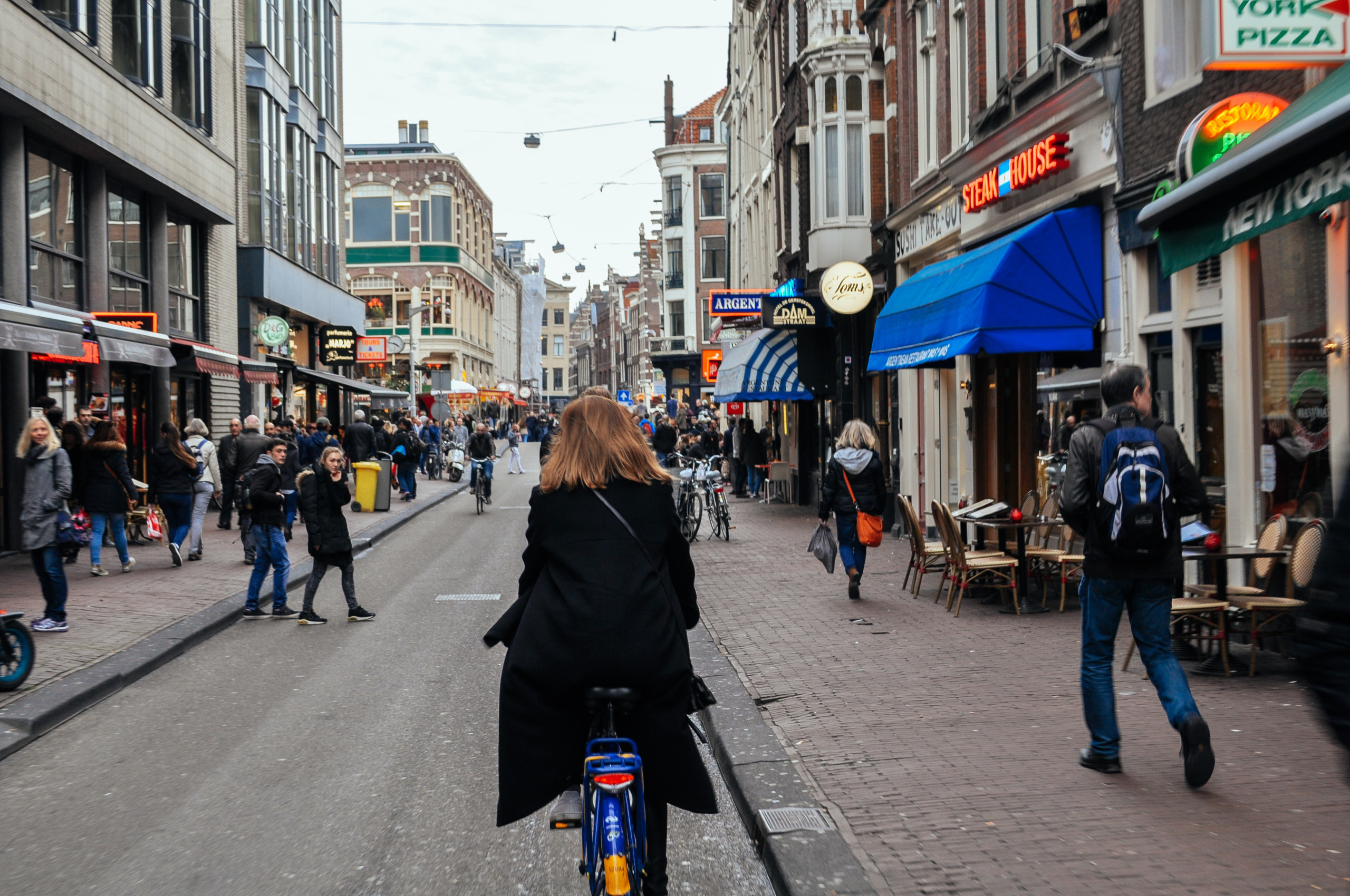Infrastructure / Mobility / Pedestrians / Shared space / Traffic safety / Urban Mobility Design / Walking
Design streets from the outside-in

When it comes to making choices in street design, the first question many traffic engineers ask is, “What is the AADT on this street?” (in normal English: how many cars drive down this street on an average day). While this is a logical question, since the number of vehicles traveling in a space greatly influences the look and feel of a street, it clearly displays the values underpinning “modern” street design. Many in the traffic engineering profession consider motor vehicle movements, delay and even the storage of private cars to be the primary purpose of a street, even the suburban residential ones.
At Mobycon, we approach street design in a different way. To us, the fundamental starting point of street design begins with the individual.
Step 1: Start at a smaller scale

Consider this the block of clay that you start sculpting your street with. A fully pedestrianized street has (practically) zero chance of traffic-related crashes. It enables access for all people to all properties. For us, at the beginning of a project, all space is pedestrian space.
Of course, most streets don’t, and shouldn’t, look like this. While walking is healthy, sustainable and terribly space-efficient, over longer distances it is just not time-efficient or fast enough. So instead of pedestrianizing the entire city, we have to acknowledge that most (but not all) streets have a certain “flow” function.
Step 2: Mixing in two (or three)-wheeled travel

The second step in street design is thus to add bicycles–and other micromobility modes–to the mix. This creates a minor increase in the potential for traffic crashes and can thus be considered a (necessary) compromise to vision zero. If the desired volume of bicycles is high enough, you might put in some separated cycle infrastructure. This is likely to allow for people on bikes to speed up, and is a fundamentally small sacrifice in safety for the sake of (bicycle) flow. The level of risk, however, is very low, and thus acceptable in an urban environment.
Step 3: Allowing for cars while reducing risk
For most streets, we consider it necessary to let cars use them as well. Through decades of policies that carve out space for cars and facilitate their use many people have become reliant on them. Allowing cars into our streets is a calculated safety risk. They have a much higher kinetic energy than bicycles and pedestrians, which increases the risk of injury in the case of a crash. To counter this risk, the first step is to lower the travel speed of cars (reducing the risk of fatalities), as well as limiting the number of cars on the street, thus reducing the chance of a crash. This (under the Dutch “Sustainable Safety” paradigm) leads to the following design:

This is the basic premise of all Dutch residential streets. A narrow street with a 30 km/h speed limit and limited through traffic, resulting in a relatively low number of injuries and fatalities in the space. Even if we add parking, there is still plenty of space for pedestrians and bicycles if it is designed in a way that reduces travel speed and removes through traffic.
For many traffic engineers, however, this is a special kind of street that does not result in an appropriate level of service(!) for vehicles. This is where it gets tricky.
Sacrificing space for Level of Service
Allowing a higher level of service for vehicles inherently means reducing safety for pedestrians and bicycles. A design like this means we have to separate them. Therefore, choosing a higher level of service for cars greatly increases the amount of space required. Not simply because the cars need more space, but because the higher speed of cars is a risk for pedestrians and people on bicycles. This means we need additional space for dedicated infrastructure for both.

As you can see from the image above, the space for pedestrians shrinks dramatically once we aim for a high level of service (read: speed and volume) for cars. Even using fairly modest design standards, the space for pedestrians is reduced from 5.4 m either side to a measly 2.5 m either side. Barely enough to park your bicycle or for two wheeled pedestrians to pass.
Design for people first, then cars
By switching the approach to street design from one that focuses on designing for the car first to one that first looks at the most vulnerable mode–walking–and then building out from there, the steps to create a safer environment for walking, cycling and other human-powered mobility options become apparent. It is also easier to therefore design those safer environments from the start. It is not about taking cars out of the equation completely, but rather designing streets that accommodate for the others first. Acknowledging that all public space is by default pedestrian space flips our thinking and forces to ask a different set of questions. This approach makes us think about the calculated risks we are willing to take and consider the required measures to reduce the severity of crashes, ultimately creating a vibrant, comfortable space for all modes.
 ">
">Lennart Nout
‘The interplay of different modalities within cities intrigues me. I am always looking for the best solution for the city and its inhabitants, while playing close attention to bikes. In the Netherlands and abroad I give workshops on the development of cycling culture, strategic network planning, street design and intersection design.’

